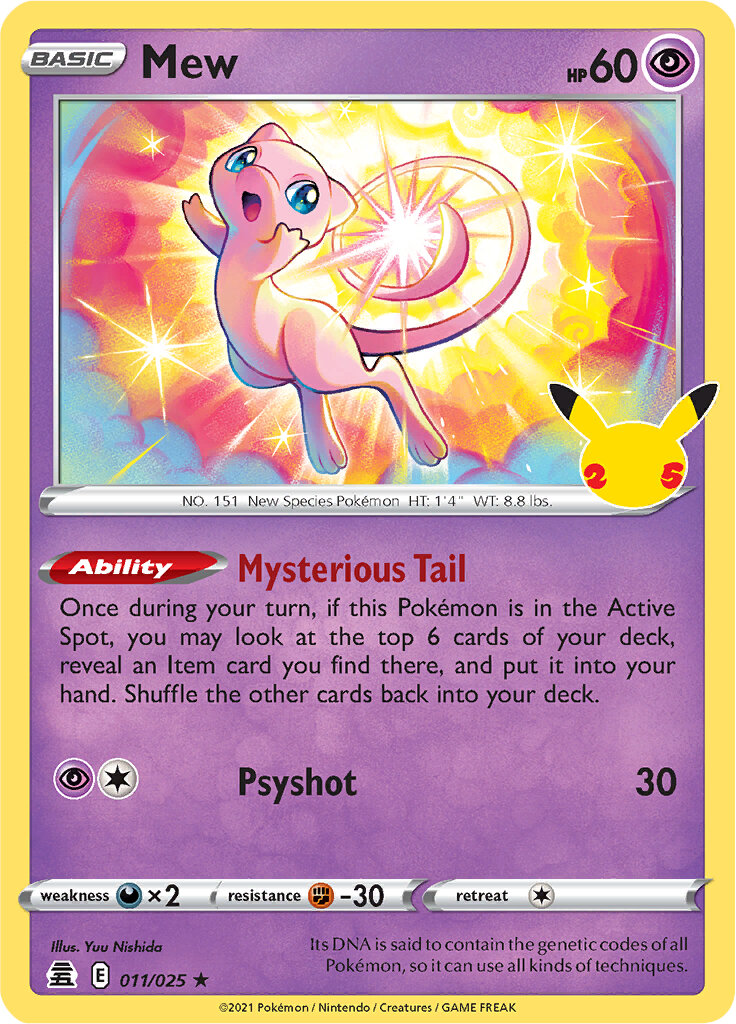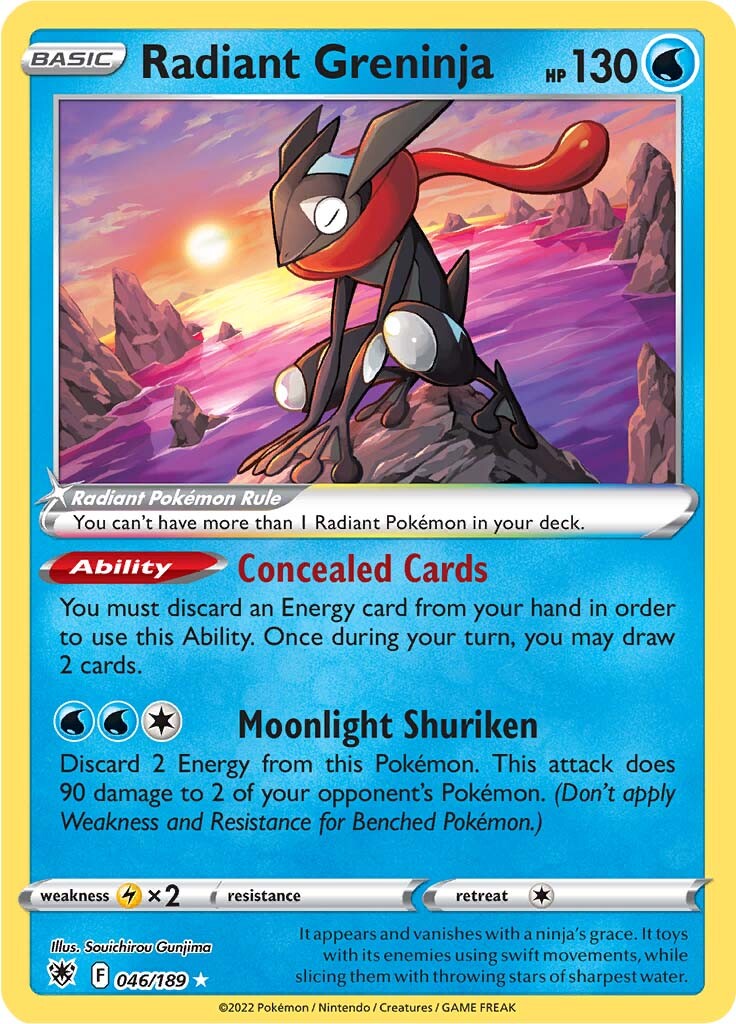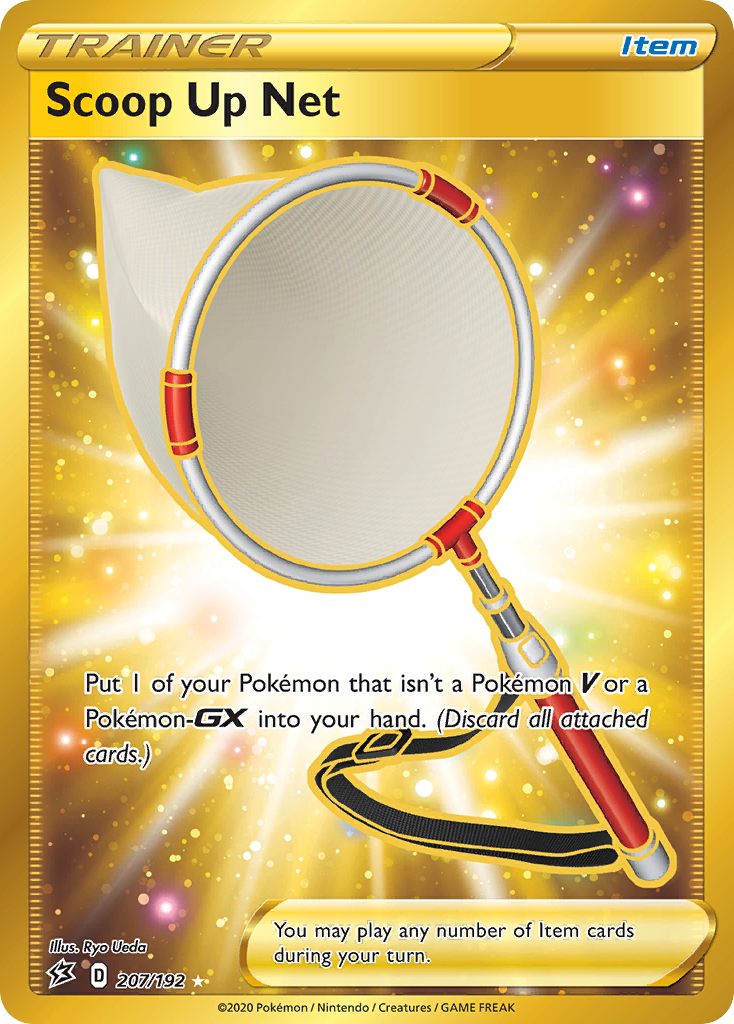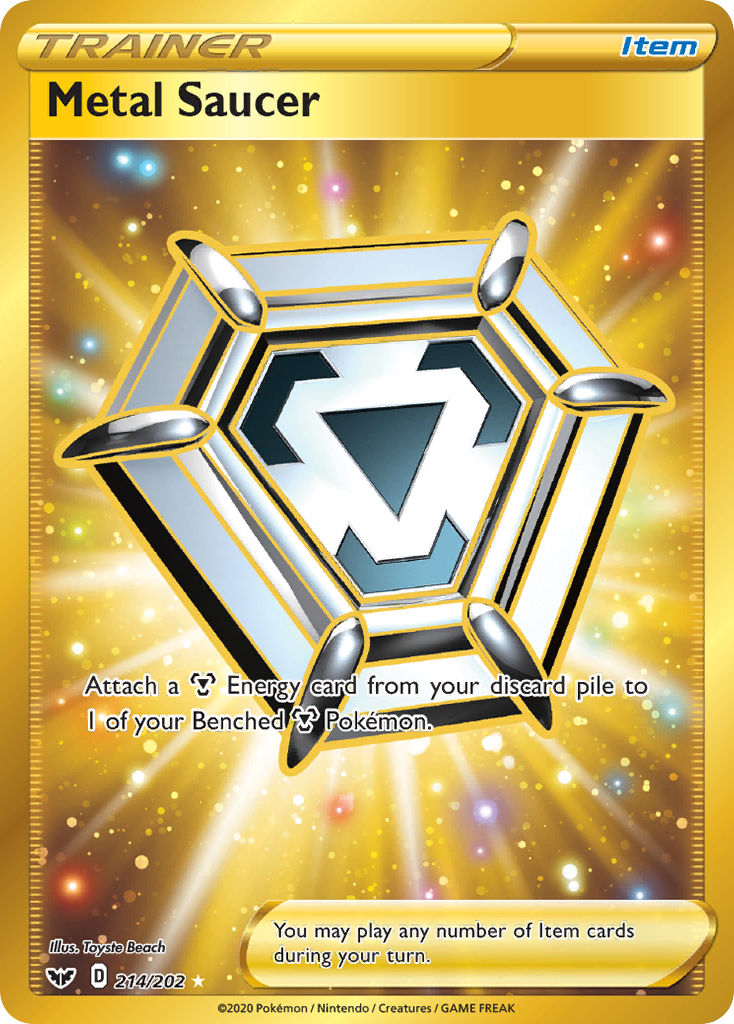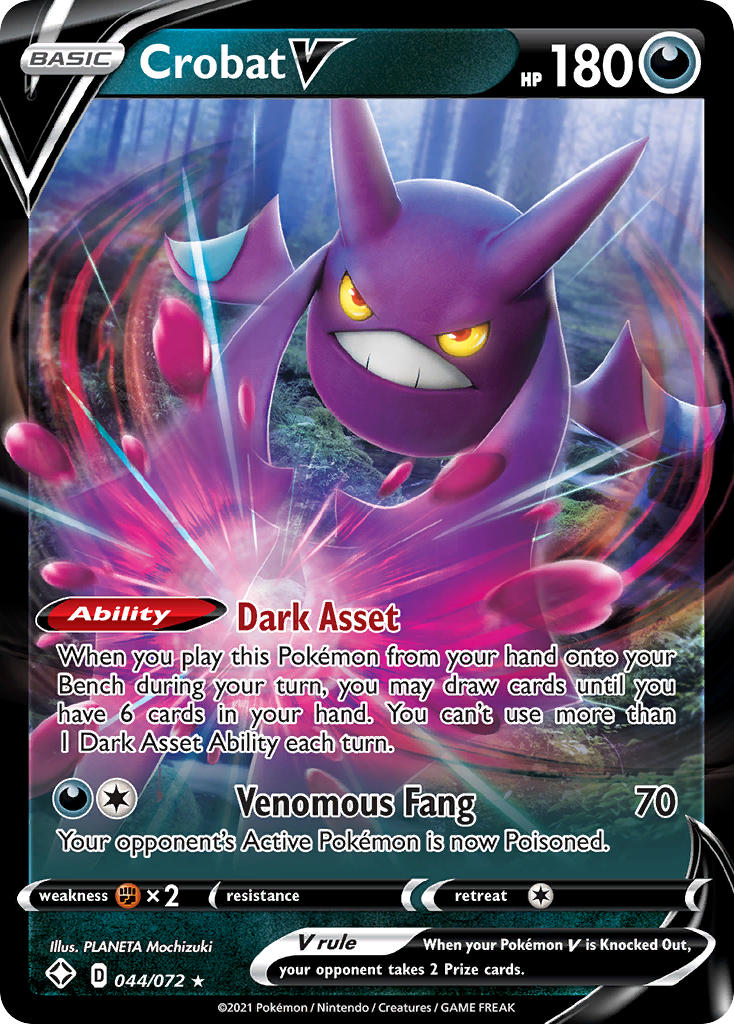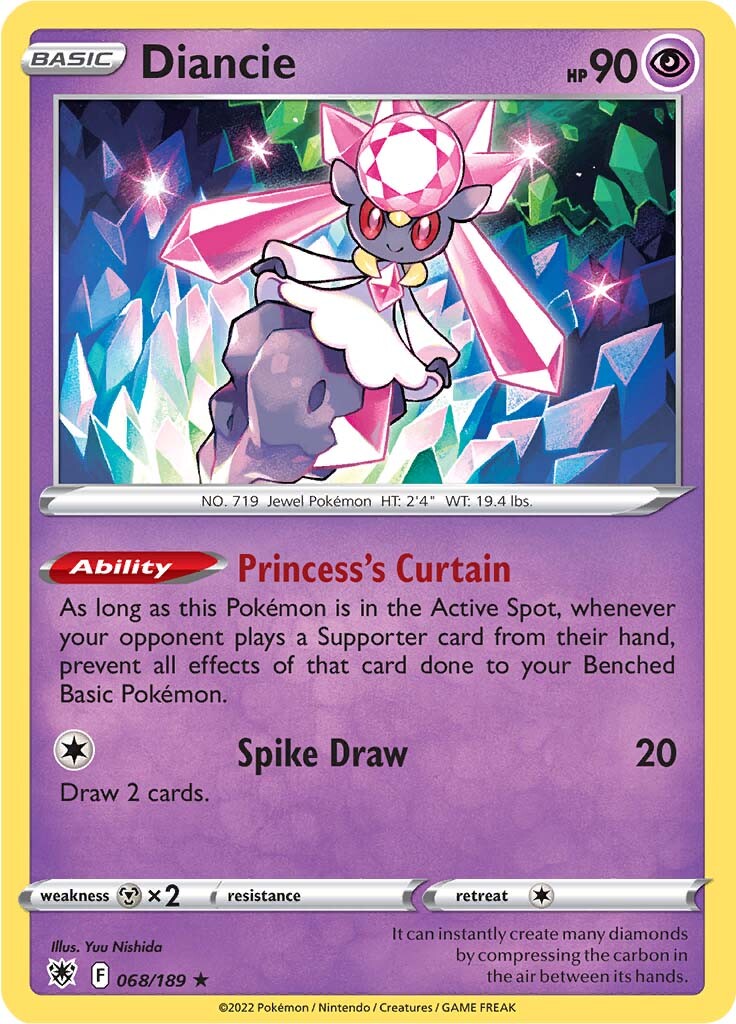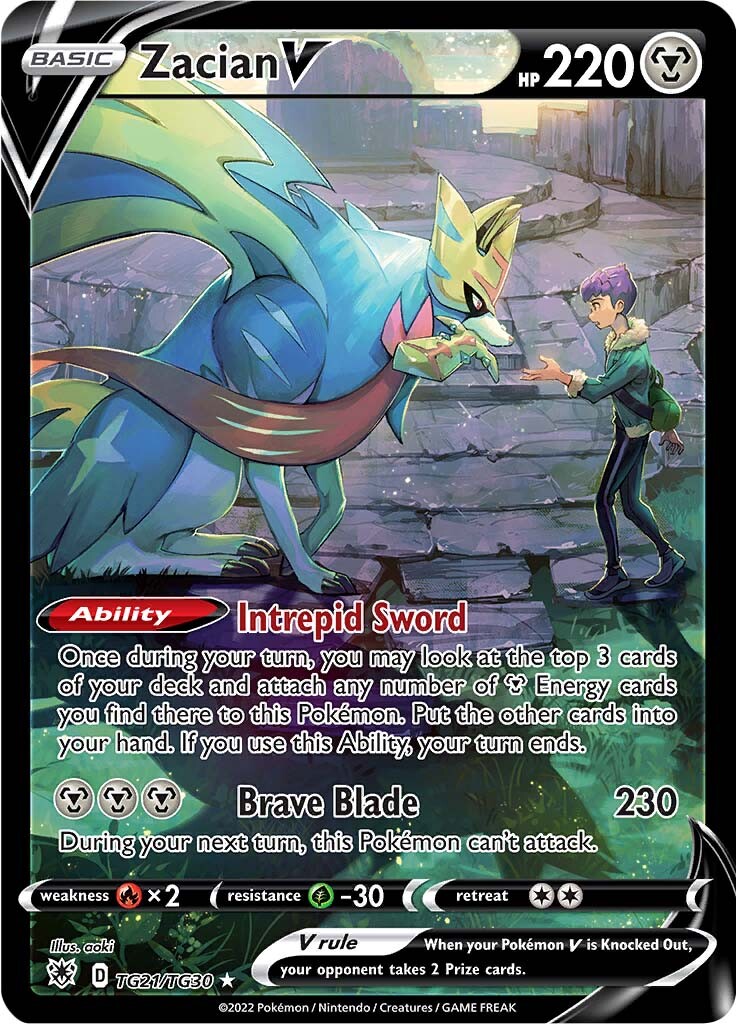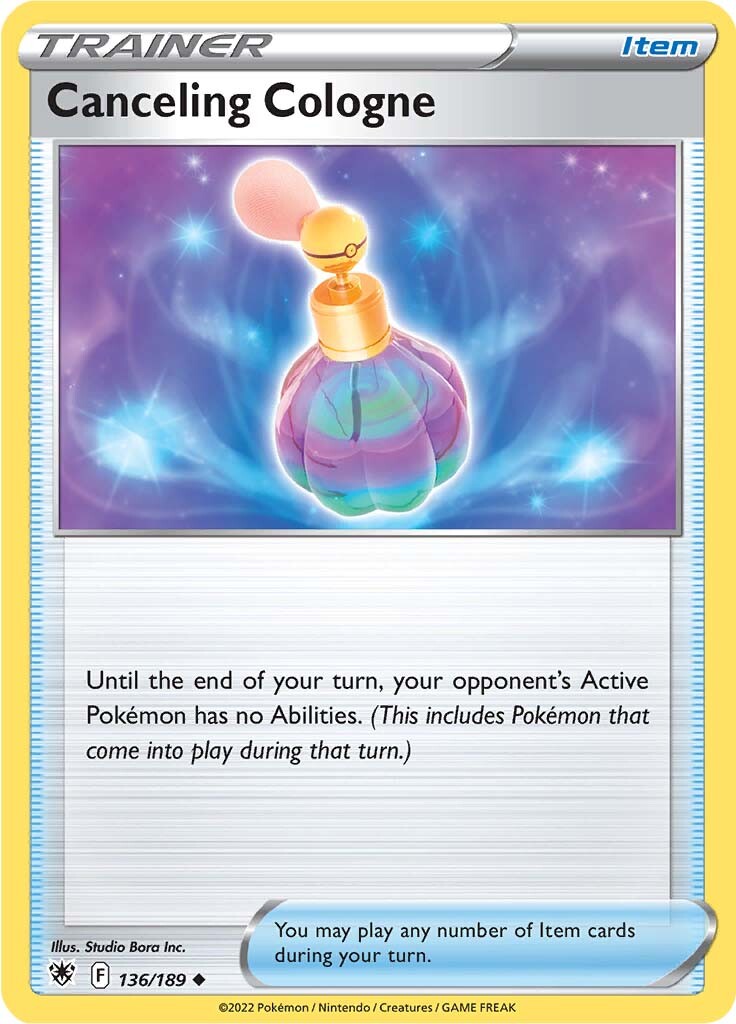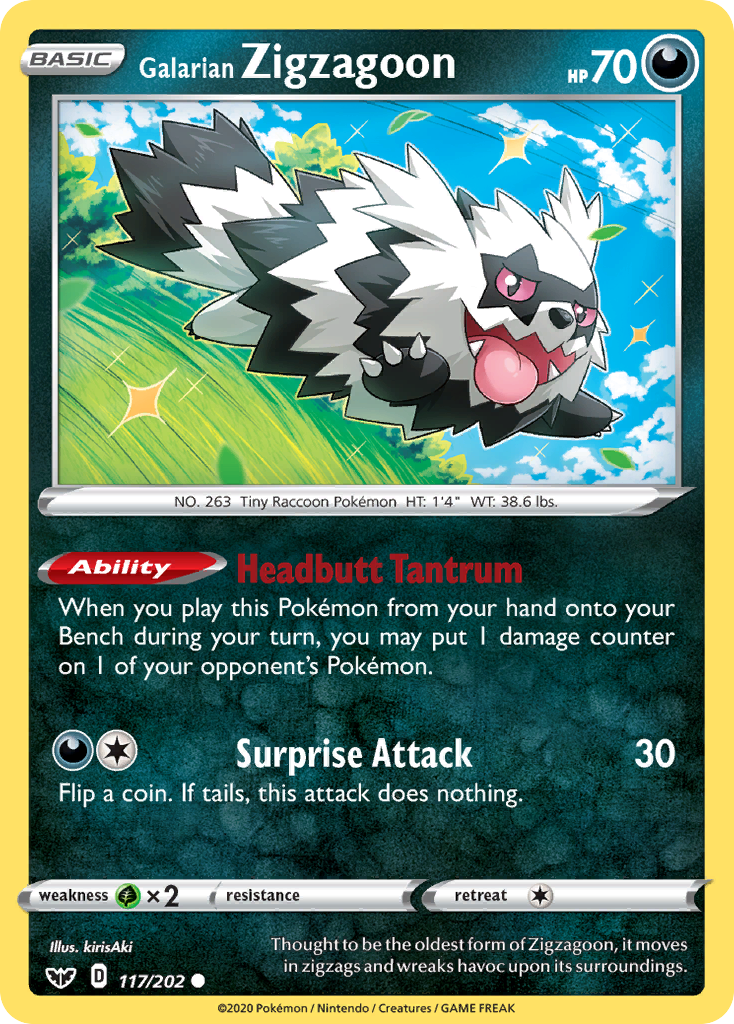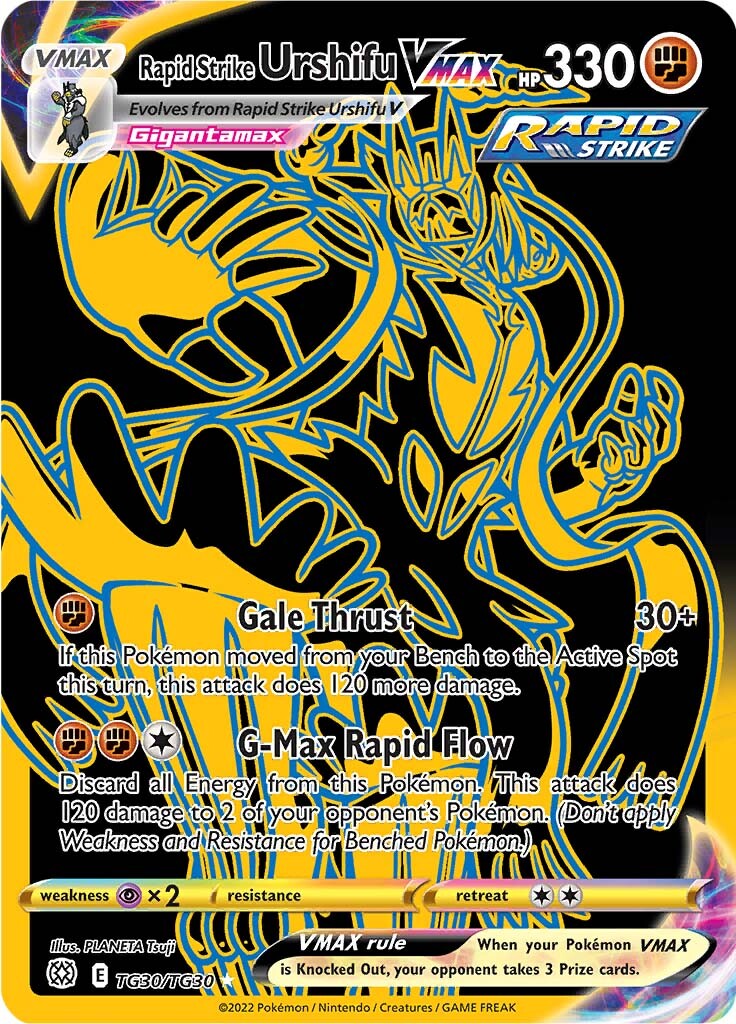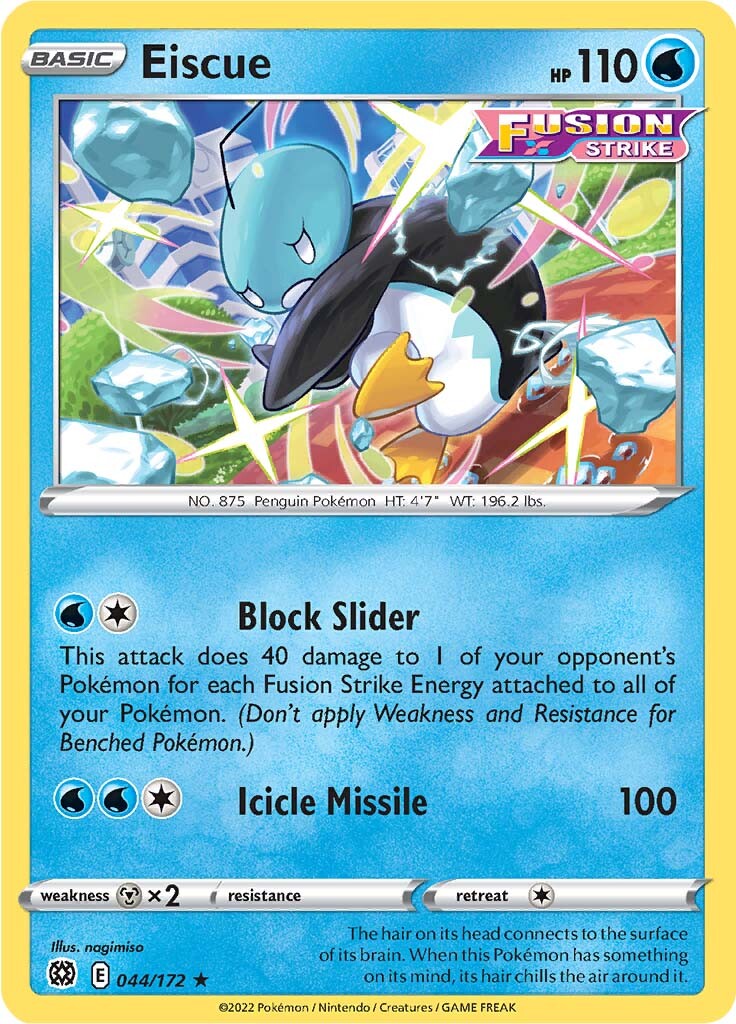Back in February, when Brilliant Stars came out, I made it very clear, both on this website and on social media, that I thought this was one of the most impactful sets of the modern era for the competitive game. The release of plenty of powerful consistency cards, such as Ultra Ball and Bibarel, as well as the format-defining Arceus VSTAR, would change the competitive landscape, I argued – and I was right (not that it was an especially hard prediction to make). In contrast, Astral Radiance struck me as a lower-impact type of set. There would be new archetypes, including Palkia VSTAR which would be (and is) a candidate for BDIF, but the way that we build decks would not change.
It looks like I was wrong on this topic though, because a new engine of sorts has emerged and is quickly taking the world by storm. Inteleon has been the leading engine the whole year: before Fusion Strike, only a few non-Inteleon decks could claim to be Tier 1 (remember Single Strike Urshifu?), and after Fusion Strike, the metagame was almost only Mew and Inteleon decks. Brilliant Stars diversified the metagame with non-Inteleon Arceus decks joining the fray, but now, we have decks relying not on Inteleon or on Bibarel, but on Mew from Celebrations.
This engine, which is called the Turbo engine by the community due to its speed, includes Mew, Radiant Greninja, Scoop Up Net, Crobat V and Trekking Shoes. The general idea is to play fewer of your main attackers but set them up faster, drawing your deck very quickly by playing fewer Supporters and more Items. This type of engine has only existed for about a week at the time of writing, but it has already won Melbourne Regionals and some of the biggest online tournaments, so it’s something to watch out for.
In this article, I’ll explain how the engine works by looking at three different decks that have successfully used it, and discuss some options as well as the weaknesses and that engine and how to exploit them.
Palkia VSTAR has always been the face of Astral Radiance, while Dialga VSTAR was only notable to Expanded players. That was until Reiji Nishiguchi, a Japanese player notable for his top 8 finish at Worlds 2017, won the 320-player Late Night Series #41 online event with Dialga VSTAR, beating a bunch of Palkia VSTAR (including Gustavo Wada and Alex Schemanske) in the process. Here was his deck list:
4 Mew CEL 11 2 Crobat V SHF 44 2 Origin Forme Dialga V ASR 113 2 Origin Forme Dialga VSTAR ASR 114 1 Radiant Greninja ASR 46 2 Avery CRE 130 2 Marnie CPA 56 1 Raihan EVS 152 1 Boss's Orders BRS 132 4 Metal Saucer SSH 170 4 Cross Switcher FST 230 4 Quick Ball FST 237 4 Scoop Up Net RCL 165 4 Trekking Shoes ASR 156 2 Energy Search SSH 161 2 Ultra Ball BRS 150 2 Battle VIP Pass FST 225 2 Hisuian Heavy Ball ASR 146 1 Big Charm SSH 158 1 Air Balloon SSH 156 2 Training Court RCL 169 11 Metal Energy 8
This list is fairly straightforward. Using Radiant Greninja and Scoop Up Net (which lets you use Concealed Cards again), you can draw cards while discarding Energy, which will be recovered with Metal Saucer. Crobat V lets you draw cards faster than, say, a Bibarel engine, while taking less space on the Bench, and Mew can help find cards to let you progress. Trekking Shoes also thins the deck, allowing you to discard Energy and useless cards while drawing into more relevant ones. After a couple of turns of setup, Dialga VSTAR can use Star Chronos and follow it up with Metal Blast. At this point, you’ve played two turns in a row, where you may have played Marnie and/or Avery for disruption, and the opponent is facing a 280 HP Dialga VSTAR (or 310 HP, with a Big Charm), loaded with Energy, while having lost their most dangerous threats. Dialga VSTAR will usually close out the game the next turn (a second Dialga VSTAR can also attack. Even though it can’t be powered up with as many Energy, a one-Energy or two-Energy Metal Blast can KO small targets such as Sobble or Drizzile.)
As you may have guessed, sequencing (in which order to play your cards to get the most value out of them) plays an important role in making the most out of this deck. Generally speaking, when looking at your hand, you should have an idea of whether you’ll play Crobat V this turn or not. If the answer is yes, then you should look to play as many cards as possible before that, although make sure you don’t discard important pieces (mostly Metal Saucer, which is the most precious resource in the deck). Hisuian Heavy Ball should generally be played first so you can see what’s Prized and take your decisions accordingly. It’s also good to play Trekking Shoes as soon as you can, whereas Concealed Cards is better after you’ve played Crobat V, in order to maximize the amount of cards in hand (that said, you can also Concealed Cards first, then play a Scoop Up Net on Greninja, and use Crobat V before the second Concealed Cards.)
As often with this sort of deck, the exact order in which you should play your cards and use your Abilities depends on the situation, especially what you want to accomplish on a given turn. If you know that you have a Metal Saucer Prized, for example, you may decide that it’s too unlikely that you’ll draw the other three on a given turn (even keeping Mew’s Mysterious Tail for after all your draw cards have been played, to make the most out of it), and plan on comboing the next turn instead.
I’ve played this deck on a recent video which you can look at to get an idea of how to actually sequence your cards.
Second, while this deck works very well against other V-based decks, it has a harder time against single-Prize Pokémon. Against Regigigas, for example, the big Star Chronos double turn will only result in two Prizes taken, which is not a game-winning advantage. In this matchup, Avery and Marnie are necessary to add some disruption to the mix, but that might not be enough. Similarly, Hoopa / Moltres / Inteleon can shrug off the double turn, knowing that in the late game, Galarian Moltres will be able to OHKO Dialga VSTAR (with a Zigzagoon or Quick Shooting ping). The best use of Star Chronos here is to KO two Sobble or Drizzile in a row and try to make your opponent brick, but it’s hard when they can afford to use a turn to refill their hand with Snorlax.
Finally, Miltank is an autoloss for the deck. With no way to hit it, the deck simply folds to even a tech Miltank in a random deck. Fortunately, Miltank is mostly seen alongside Blissey V, in a deck that’s slow enough to set up that you can sometimes donk them before they can actually Bench a Miltank. However, it’s still a very unfavorable matchup.
One week after Reiji Nishiguchi’s win with the deck, the next Late Night Series was also won by Dialga VSTAR in the hands of another Japanese player, Junnosuke “wadedaze” Tanaka (who has had plenty of success in online events in the last two years). This shows that the deck was not a one-hit wonder; it’s a deck that I think players will need to respect, especially in Milwaukee and Columbus. Junnosuke, and other players using the deck in online events, have made some changes to the original list. The list below is an updated list of sorts, using some of these ideas:
****** Pokémon Trading Card Game Deck List ****** ##Pokémon - 13 * 2 Crobat V DAA 104 * 2 Origin Forme Dialga V ASR 113 * 1 Zacian V SSH 138 * 2 Origin Forme Dialga VSTAR ASR 114 * 1 Diancie ASR 68 * 4 Mew CEL 11 * 1 Radiant Greninja ASR 46 ##Trainer Cards - 36 * 1 Canceling Cologne ASR 136 * 3 Boss's Orders BRS 132 * 2 Marnie SSH 169 * 2 Avery CRE 130 * 4 Metal Saucer SSH 170 * 4 Trekking Shoes ASR 156 * 4 Quick Ball FST 237 * 4 Scoop Up Net RCL 165 * 2 Battle VIP Pass FST 225 * 2 Energy Search SSH 161 * 2 Ultra Ball FCO 113 * 1 Escape Rope PLS 120 * 1 Switch EVO 88 * 1 Hisuian Heavy Ball ASR 146 * 1 Air Balloon SSH 156 * 2 Training Court RCL 169 ##Energy - 11 * 11 Metal Energy Energy 8 Total Cards - 60 ****** Deck List Generated by the Pokémon TCG Online www.pokemon.com/TCGO ******
Cross Switcher can be an amazing card, both to target one of your opponent’s Pokémon and to get your Dialga VSTAR back to the Bench if it’s been brought Active too early (this includes matchups in which you take early Prizes with small Metal Blast attacks, where you may want to get Dialga back to the Bench to use Metal Saucer on it). However, it’s also a card that can clunk up your hands, especially when playing Crobat V. This list cuts them and instead plays more Boss’s Orders and switch Items.
There are three other additions to the deck. First, Diancie can be considered a part of the Turbo engine. It protects your Benched Basic Pokémon from Boss’s Orders, so if you can get a Diancie in the Active Spot, you can’t get your Dialga V KO’d by Palkia on turn two (except with double Cross Switcher, or Escape Rope + Boss’s Orders, but that at least makes it harder to achieve).
Second, Zacian V is added both as an additional way to draw cards and as a backup attacker, especially for one-Prize matchups. This way, there’s another Pokémon, less Energy-reliant, that can attack once both Dialga have been dealt with.
Finally, I’ve added a Canceling Cologne to the deck, as a soft answer to Miltank. This will not stop a dedicated Miltank deck. However, it will beat decks that would just add one Miltank to randomly beat Turbo decks, and against Blissey / Miltank, it makes it easier to donk them. Now, even if the opponent opens with Miltank, there’s a chance that you can KO it on the first turn with Zacian V and Canceling Cologne. There are some other niche cases for this card, such as using it against Galarian Weezing to get access to your Abilities again.
As soon as Dialga got its time in the spotlight, its rival Palkia counter-attacked. Melbourne Regionals was dominated by Palkia VSTAR: all eight decks in the Top 8 were Palkia, which obviously generated a lot of discussion (if you’re expecting my take on this topic: never judge a format by the results of its first tournament. Especially an Australian Regionals! Australia has fewer players overall, but a solid group of top players who tend to play the same thing and almost make top 8 or at least top 16, meaning that there’s less diversity in Australian top cuts than elsewhere).
Interestingly, three of these eight decks were not the expected Palkia / Inteleon variant, but a Turbo Palkia deck created by Brent Tonisson.
Pokémon (18) 4 Mew CEL 11 2 Origin Forme Palkia V ASR 39 2 Origin Forme Palkia VSTAR ASR 40 2 Crobat V SHF 44 2 Diancie ASR 68 1 Radiant Greninja ASR 46 1 Suicune V EVS 31 1 Starmie V ASR 30 1 Lumineon V BRS 40 1 Pumpkaboo EVS 76 1 Galarian Zigzagoon SSH 117 Trainer (32) 4 Boss's Orders BRS 132 2 Melony CRE 146 4 Quick Ball FST 237 4 Ultra Ball BRS 150 4 Scoop Up Net RCL 165 4 Trekking Shoes ASR 156 4 Capacious Bucket RCL 156 2 Hisuian Heavy Ball ASR 146 2 Choice Belt BRS 135 2 Air Balloon SSH 156 Energy (10) 10 Water Energy BRS W
The deck list above got first and second place in the hands of Christian Hasbani and Kaiwen Cabbabe respectively as well as a top 8 in the hands of Brent Tonisson. Natalie Millar, who also played the deck to a top 16 finish, wrote about it here, so I won’t go into too much detail. If you’re looking for insight into the uses of specific cards such as Suicune V and Starmie V, she’ll discuss this much better than I would. What I’m interested in is how this deck’s engine relates to the one used in Turbo Dialga.
There are enough similarities that the community has used the same word (Turbo) to describe both. Both decks rely on Mew, Radiant Greninja, Scoop Up Net and Trekking Shoes, along with Crobat V. Turbo Palkia also plays Diancie I previously discussed above, and it seems to be even more streamlined in its Trainer line. It plays four copies of Boss’s Orders to look for easy KOs, especially on non-evolved Pokémon V.
This works because it can also apply pressure on the Active Pokémon. One reason for this is Galarian Zigzagoon, a card that synergizes with Scoop Up Net. Imagine you’re playing Palkia / Inteleon (or Arceus / Inteleon) against Turbo Palkia. You may be tempted to limit your amount of Benched Pokémon to three, meaning that the opponent only hits for 220 damage with Subspace Swell. However, with Choice Belt, Zigzagoon and two Scoop Up Net, that brings the damage total to 280. This means that, unless you have a Big Charm (or Tool Jammer), you need to Bench another Palkia V (or Arceus V) to be safe. The opponent can then play Boss’s Orders to target that one instead, etc.
To add to this threat, remember that, just like in Palkia / Inteleon, Radiant Greninja is also a dangerous attacker that can be powered up in one turn by Star Portal, and you have a variety of lines of play that is hard to play around for the opponent.
That said, some of the Turbo engine’s weaknesses are still visible here. Apart from Radiant Greninja (which will very rarely attack more than once per game), all the attackers in the deck are Pokémon V, so Miltank (especially a Miltank with a Cape of Toughness) is once again an issue. Single-Prize decks also tend to have the upper hand against this list. A Hoopa / Moltres deck with Zeraora V, which plays no or very few Pokémon V, can withstand the fast attacks of Turbo Palkia and get the lead back with favorable trades. Note that Turbo Palkia plays no hand disruption (Marnie, Roxanne) or even Big Charm, so it’s easy for the Liminal Deck player to get a revenge KO with Zeraora at any point in the game, and then to set up Galarian Moltres at the end.
While I need more testing to make sure of it, I think the Turbo engine (and Turbo Palkia especially) is also weak to Rapid Strike Urshifu VMAX, compared to other decks. This is because it doesn’t play Manaphy (it could, but it takes space on the Bench) so even if Diancie is Active, Urshifu can take meaningful KOs. Also, Turbo decks are reliant on Crobat V to draw, whose Fighting Weakness makes it an easy KO for Gale Thrust or even G-Max Rapid Flow. I imagine that the same groups of players who took over EUIC by storm with Urshifu (and, in the case of Tord Reklev, kept winning with it afterwards) will once again consider it heavily for Milwaukee and/or NAIC. Urshifu can have trouble with classic Palkia / Inteleon, but if Turbo Palkia takes over as the most popular variant (which, to be fair, I doubt), then Urshifu becomes a fantastic play.
Compared to Turbo Dialga, Turbo Palkia doesn’t have a power spike as impressive as the Star Chronos + Metal Blast double turn, but it can attack faster and apply more pressure throughout the game. One worrying thing is that more and more people are teching Lightning attackers into their decks, and these attackers work just as well on Turbo Palkia than on Palkia / Inteleon. This means that Turbo Palkia isn’t protected from most of the threats that plague its Inteleon counterpart.
One advantage that Turbo Palkia has over Turbo Dialga is that it can more easily tech against Miltank and Regigigas at the same time. By including one copy of Eiscue, you can basically win against both Blissey / Miltank and Regigigas as long as they don’t tech against you, which is not easy to do (one way that Regigigas can beat Eiscue is by playing Regieleki ASR with the sniping attack. They can play Boss’s Orders to bring Eiscue back to the Bench, then use Targeted Bolt to KO it since Blockface’s effect will be removed once on the Bench. Blissey / Miltank doesn’t have a similar answer, although it could play Escape Rope and Boss’s Orders to get Eiscue out of, then back in, the Active Spot).
After Turbo Dialga appeared, I considered which other decks could use this Turbo Engine. My thoughts logically turned towards the Dark-type, since it can have the same Energy acceleration engine, with Dark Patch instead of Metal Saucer. There are multiple Dark-type attackers worth considering: Samurott VSTAR and even Darkrai VSTAR (which can recover Dark Patch thanks to Star Abyss, and also combines well with Galarian Moltres V) come to mind.
However, I felt like Gengar VMAX might be the most suited to this role, for a couple of reasons. Gengar is actually pretty low maintenance as an attacker: it can easily deal 250 damage, or even 280 with a Choice Belt, which is obviously relevant in the current metagame, without needing to get a bunch of Energy in play like Darkrai VSTAR does. It also combines well with the switching cards that the deck should already play because of Mew.
A player named Tibor Baranyay actually made top 16 at Melbourne regionals with this same idea, proving it has worth. Here’s my own take on the deck:
****** Pokémon Trading Card Game Deck List ******
##Pokémon - 15
* 2 Crobat V DAA 104
* 2 Gengar V FST 156
* 2 Koffing SHF 41
* 2 Galarian Weezing SHF 42
* 2 Gengar VMAX FST 157
* 4 Mew CEL 11
* 1 Radiant Greninja ASR 46
##Trainer Cards - 34
* 2 Switch HS 102
* 4 Dark Patch ASR 139
* 1 Training Court RCL 169
* 4 Boss's Orders RCL 154
* 1 Bird Keeper DAA 159
* 4 Quick Ball SSH 179
* 2 Energy Search SSH 161
* 1 Air Balloon SSH 156
* 4 Scoop Up Net RCL 165
* 2 Choice Belt BRS 135
* 2 Ultra Ball SUM 135
* 1 Hisuian Heavy Ball ASR 146
* 2 Marnie SSH 169
* 4 Trekking Shoes ASR 156
##Energy - 11
* 10 Darkness Energy SWSHEnergy 16
* 1 Hiding {D} Energy DAA 175
Total Cards - 60
****** Deck List Generated by the Pokémon TCG Online www.pokemon.com/TCGO ******
As you can see, I’ve kept the most important cards of the Turbo engine. However, instead of Diancie, I’ve added a small line of Galarian Weezing. This card plays a few roles: first, it’s generally a good card, both against other Turbo decks and Inteleon decks. Especially combined with Marnie, you can make it harder for your opponent to accomplish their game plan, including preventing a KO on your Gengar V on turn two. Weezing is also a great counter to decks such as Regigigas and Hoopa / Moltres / Inteleon which, as discussed earlier, tend to win Prize trades against Turbo decks. Weezing can sometimes win by itself, or at least give enough time to take an important lead in the game. Finally, against Pokémon VSTAR with a Big Charm or Tool Jammer, Weezing can deal some damage to put the opponent into G-Max Swallow Up KO range.
Due to Weezing helping against Regigigas, Avery is less important to the deck, so I’ve cut it. Instead, I’ve added a Bird Keeper, which can get both Weezing and Gengar out of the Active spot. Bird Keeper is more important in a Gengar deck than elsewhere in order to deal with G-Max Swallow Up’s drawback.
It’s at the end of a season, when the available card pool is at its largest, that we often see new ideas that seem like they emerged organically. The card designers obviously knew what they were doing when they designed Rapid Strike Sobble and Inteleon knowing that Shady Dealings Drizzile and Inteleon were in the format, or when they created, say, every Fusion Strike card. But did they anticipate that Celebrations Mew, Trekking Shoes, Radiant Greninja and Scoop Up Net would see play together in a variety of decks? Maybe they didn’t, and in my opinion, that makes it more interesting. After all, where is the fun of deckbuilding if everything you build was already thought of by the game’s creators?
Despite its sudden rise in the competitive scene and the success that comes with it, the Turbo Engine is far from flawless. It makes sense that with more cards available, players would want to play faster decks, which are generally focused on Basic Pokémon, but such decks have flaws of their own. There are reasons why Crobat V has been avoided for a long time: giving the opponent easy Prizes hasn’t been the best way to play the game this season, especially when you could instead force your opponent to KO powerful VSTAR Pokémon for the same amount of Prizes. As discussed earlier, some decks, especially Urshifu, can really capitalize on that. I have no doubt that top players will be looking to capitalize on this sort of weakness to beat Turbo decks in the upcoming major events. This is why, if I was looking to play any Turbo deck, I’d probably play Dialga. It does have important weaknesses, but Star Chronos is the kind of trump card that allows a deck to beat even unfavorable matchups, so it’s the deck that would probably be the most resilient to anti-Turbo decks.
To be honest, I’m very excited to see how the metagame shapes up this weekend in Milwaukee, as it will directly impact what decks will be played at NAIC. If you’re playing this weekend, good luck to you!
I won’t be writing for the next week or so because I’ll be travelling for NAIC, so thank you for reading, and if you see me in Columbus, feel free to say hi! It’s always a genuine pleasure to meet my readers (even if I don’t always have much time to chat in between rounds).


